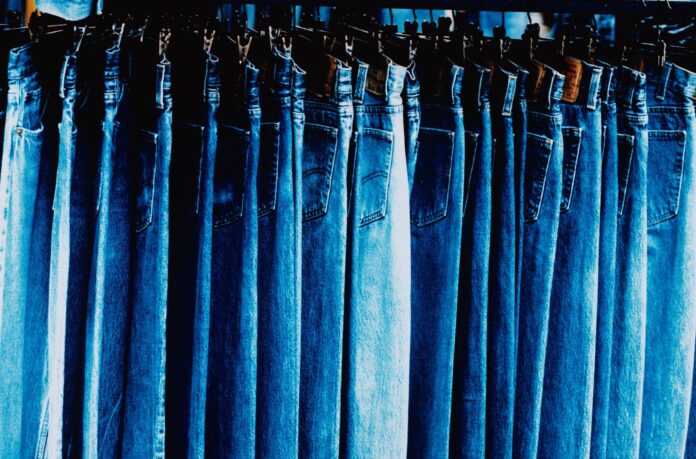Denim or jeans are often mistaken for one another. Incorrectly, people tend to use these words interchangeably, whereas, in fact, they do not mean the same thing. Denims are identical to jeans, although not all jeans are denims. Denims, on the other hand, are the raw fabric materials used to create jeans and a wide variety of other garments and accessories, such as purses, shirts, skirts, and jackets. Let’s take a closer look at the difference between jeans and pants.
What is Denim?
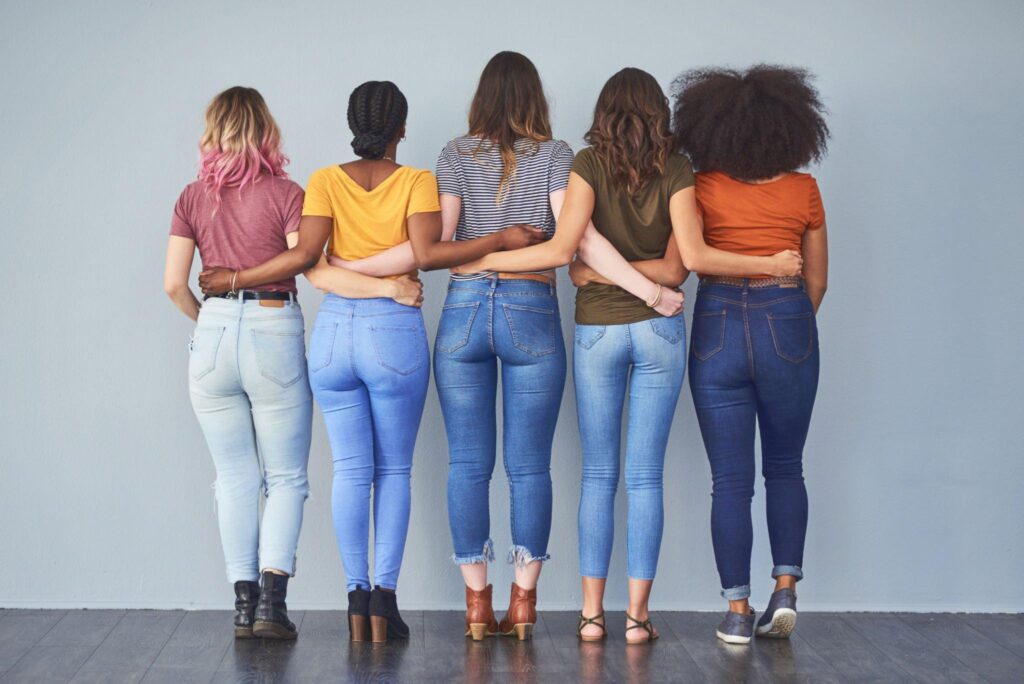

Denim is a durable cotton fabric woven in a twill pattern that produces a distinctive diagonal ribbing.
Have you ever pondered why the inner of your blue pants is white?
The weft thread of denim fabrics is not coloured, while the warp thread is. This intricate weaving technique creates a striking two-tone effect by crossing coloured thread (often indigo) with white thread. The dye is deposited on the fabric’s face, while the white is drawn to the reverse. That is, two or more warp threads are passed under the weft threads. Denim fabric is distinguished from other durable woven cotton fabrics like canvas or cotton duck by the greater prominence of the warp strands on the right side. Manufacturers frequently combine cotton with polyester and elastane to make stretch denim or to boost the fabric’s durability.
Indigo dye is commonly used to give denim its signature blue-cotton hue. Many different shades of denim, from dark to light, are created by washing, rinsing, and distressing the fabric after it is dyed. Cotton denim can be produced either black or white by a unique dyeing technique.
Here are a few of denim vs jeans defining traits in the fashion world:
- The word “denim” refers to a type of fabric.
- Besides jeans, denim may be utilised to create a wide variety of other garments.
- Denim, a popular fabric choice, may be repurposed into a wide variety of items.
- Denim can be used to describe bottoms, tops, and even skirts and dresses.
What Are Jeans?


Are jeans pants, or denim pants, or are a type of casual pants. A standard pair of jeans, which were patented in the United States by Levi Strauss and Jacob Davis in the nineteenth century, has a button closure, a zipper, belt loops, front and rear pockets, and copper rivets to strengthen the pockets.
Although, difference between pants and jeans is that jeans are a form of high-quality pants produced from an unique cotton twill weave denim fabric, and both jeans and pants are designed to cover the lower half of the body from the waist down to the knees, ankles, and feet. Jeans, like chinos, can be worn casually for everyday leisure activities, but they are constructed from a more sturdy cotton fabric that is typically dyed with indigo to give them their distinctive blue hue.
It is well knowledge that jeans can go multiple days without being washed due to their enduring quality.
However, pants are not as durable and comfortable as jeans so thats a basic pants and jeans difference.
Jeans vs pants come in a variety of conventional hues, although blue, white, and black are the most common. Many jeans are produced from indigo denim. You may get jeans in a wide range of fits and heights, from very high to very low (from baggy jeans to slim-fit to skinny jeans).
Characteristics of jeans vs denim in the Fashion Industry;
- Denim is the material from which jeans are fashioned.
- Denim pants are always called jeans.
Some other difference between Denim and Jeans in terms of;
-
Weight
Denim is a heavy raw material, yet jeans are quite lightweight. Because of their versatility, jeans are typically fashioned from lightweight materials. As you’d expect, the weights of these various designs vary. The thick ones are great for the colder months because they are constructed of sturdy dry denim and have a substantial weight.
-
Durability


Denim is stronger because it is woven from a single bolt of cotton twill. Since denim is so long-lasting, so are jeans. To what extent they last, however, often depends on the methods used to make them. Compared to denims, denims have a longer lifespan.
-
Usage
Bags, handbags, blouses, and skirts are just few of the many items that may be made from denim. Denim is a versatile type of fabric that is used in numerous end products, including jeans. Then, jeans are simply informal pants that you wear when you want to be comfortable. In most cases, they are not appropriate for the workplace. The low maintenance requirements of different denim jeans manufacturer make them a popular choice. They can be worn multiple times without requiring ironing.
How To Keep Your Jeans And Denim In Good Condition
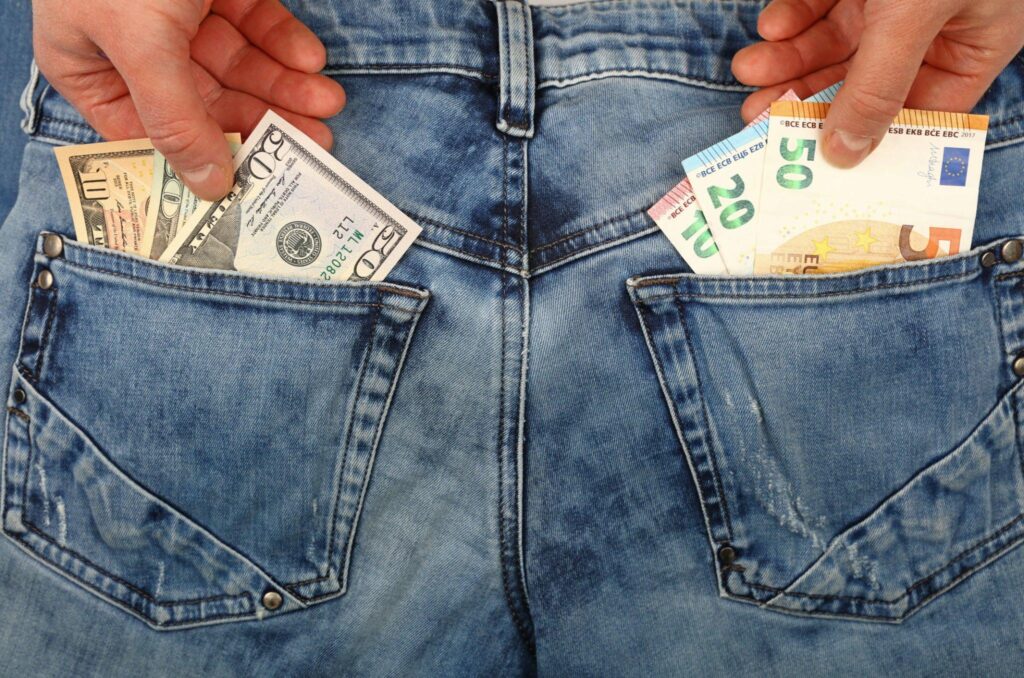

The longevity of your go-to denim or jean jacket depends on your attention in learning the best way to maintain them.
Since denim is so closely associated with jeans that its raw form is rarely seen in stores, let’s talk about how to take care of jeans.
Specifically, the jean’s colour and durability are crucial. The first piece of advice is to avoid combining light and dark denim. Be wary of lighter pieces of furniture because the colour can be altered by soaking dark clothing.
If you don’t wash your jeans too often, they’ll last a long time. Regular washing can cause the colour and quality of these items to fade over time, thus it is recommended to wash them less frequently. Rather of relying on a single pair of jeans, it can be helpful to instead acquire multiple pairs.
Different patterns require different maintenance procedures, so read the label carefully. The risks of hand washing and machine washing should not be ignored.
Here are some recommendations for keeping your denim in good shape.
-
Don’t Wash Your Jeans Or Denim Regularly


If you don’t wash your jeans, they’ll look and feel great for a long time. You should still wash the jeans; you’ll just need to wait longer in between washes. This is the best way to preserve the quality of your prized footwear. To preserve the denim’s fibres and shape, you should also limit the amount of spin cycles you put them through. Also, you can give Mother Nature a break by avoiding washing your denim or jeans as often.
Washing your pants more often than once every decade is discouraged.
However, denim can be washed more frequently.
Additionally, when they start to look dirty, you can easily spot-clean them. You can spot clean your denim and jeans using a moist towel or a soft toothbrush dipped in vinegar and a light detergent. The vinegar in the mixture will eliminate odours, and the gentle detergent will clean without transferring the dye. Some eucalyptus oil can be added to the mixture if you need to remove very stubborn stains.
-
You May Try Cooling It Or Letting It Air Pass Out


Given the fact that there are differences between denim and jeans, the idea of waiting ten years or more to wash them all may be unsettling. Since this is the case, you should only air them out or place them in the freezer to make them smell like new again. Some of the bacteria that cause odour can be killed by freezing your denim or pants. The overall effect is that your jeans will continue to feel new for a long time.
A viable alternative to freezing is airing them out. You can hang your jeans up to dry in the fresh air by using a laundry line. Also, your denim and jeans will stay in pristine condition while the odor-causing bacterium is eradicated.
-
Washing Only By Hand Or Very Low Temperature
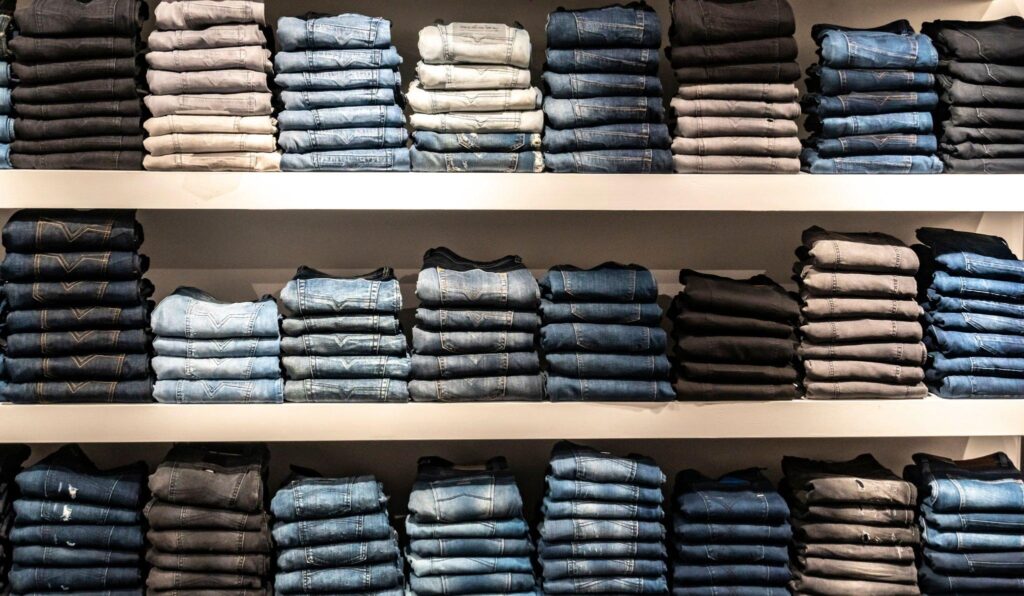

Be careful when washing your jeans. The analogy serves to highlight the fact that despite the pants’ and denim’s rugged durability, they nonetheless require gentle treatment. If you absolutely must use the washing machine, use just the hand-wash setting or a setting that is equivalent. Washing should be done exclusively in cold water with the help of a natural detergent or soap. This will reduce the chances of the fabric being warped, shrinking, or losing its colour. In addition to cutting costs, the cool cycle has environmental benefits.
If you want your jeans or denim to last as long as possible, hand wash them in cold water with a very small amount of detergent. After stirring it, let it sit for 15 to 30 minutes to absorb the flavours. Then, rinse and roll out the excess water after briefly washing for a few minutes.
-
Invert Them So That The Insides Are Showing


Aggressively washing your jeans and denim is not the way to get that ‘worn in’ feel that we all crave from our go-to pair of denim. Having worn-out jeans is not the same as having worn-in ones. If you want a subtle fading, all you have to do is break in your jeans. Turning denim and pants inside out before washing can prevent them from fading too much. Make sure you dry them in the sun by hanging them outside.
-
Let Your Jeans And Denim Dry In The Air
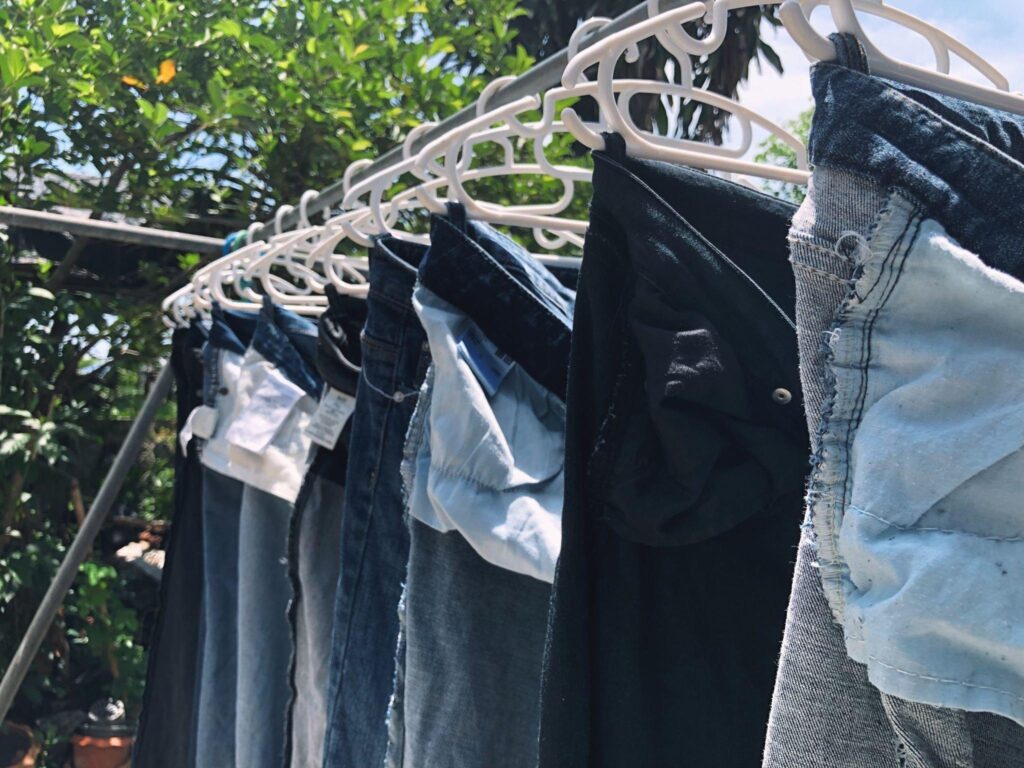

Denim is cotton, and jeans are created from denim, as shown above. Therefore, drying your jeans can cause the fibres to shrink, distort, or age faster than they otherwise would.
This would immediately ruin whatever efforts you made to get your jeans to fit precisely. Jeans and other denim garments should be shook out after washing to remove excess water and minimise wrinkles.
Then turn it inside out and hang it up to dry. After drying, your jeans and denim may feel stiff , but they usually loosen up after the first wear.
Different Varieties Of Denim
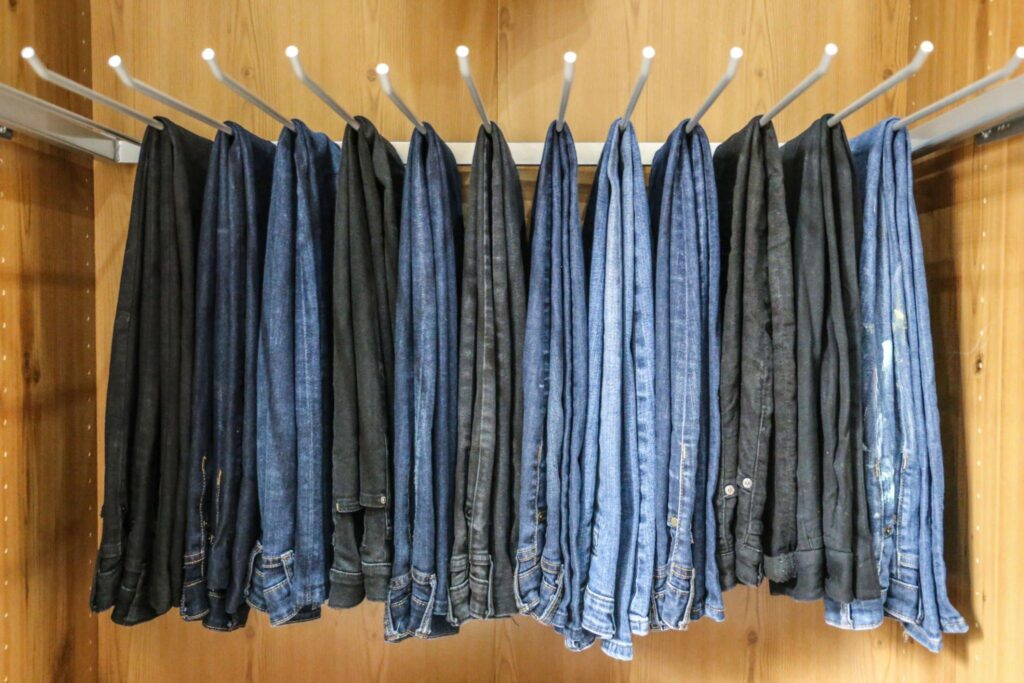

The first denim was made from a cotton serge, but today you can find it in a wide range of fabrics, including blended options that have the same fantastic look as 100% cotton denim but also have some amazing added qualities.
The characteristic “depth” of denim originates from the combination of dark indigo blue of varying shades and white threads in the weaving process. These days, you can find denim in a dizzying array of hues thanks to the elimination of indigo and the introduction of dyes that create vibrant contrast with white threads.
-
Raw Denim
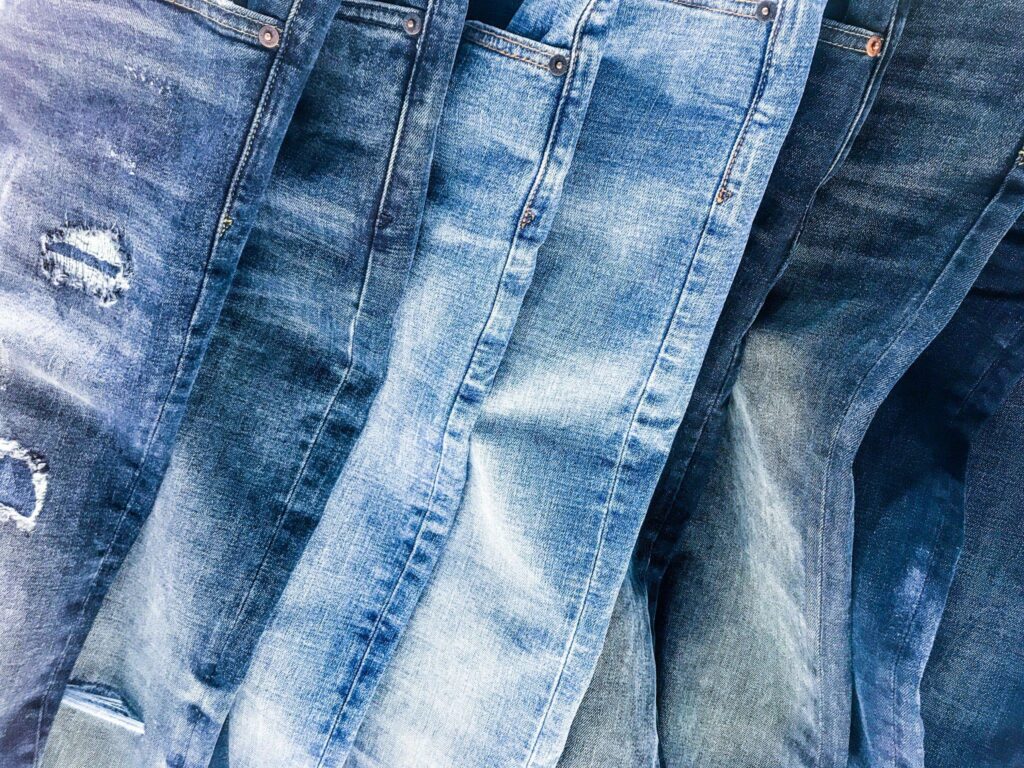

This is also called “dry denim,” “unwashed denim,” or “denim that hasn’t been sanforized.” This is a fabric that has been dyed, but has not been washed or treated in any way.
Most of the time, denim fabric is washed to make it soft and to stop it from shrinking. In essence, this is what we call “pre-washing” in sewing. The first wash can shrink raw denim by up to 20%.
Raw denim doesn’t have any of the worn-out look that we’re used to seeing in jeans. Getting a worn-out look will have to be done naturally through fading and stress.
This is a natural process that some people like better than the distressed look that can be made in a factory. Before you sew or wear raw denim, you should wash it first.
-
Organic Denim


Organic cotton is a type of cotton that is good for the environment because it is grown without using synthetic chemicals like fertilisers and pesticides. Cotton farming takes place on 2.5% of the land that is farmed around the world, but it uses 16% of all insecticides. This chemical used in farming is one of the main polluters. When making organic denim, it’s best to use organic cotton.
Also, potato starch, natural indigo, and other natural ingredients are better than tapioca starch and synthetic indigo. The length, strength, and micronaire of the cotton fibres do not vary much between conventional and organic cotton.
So, for sustainable growth, denim makers are encouraged to use organic cotton instead of regular cotton, even though it costs more. But it is hard for dyers to colour organic denim because it takes time and requires skilled workers. This makes processing costs high, which keeps organic denim from being more popular right now.
-
Sanforized Denim
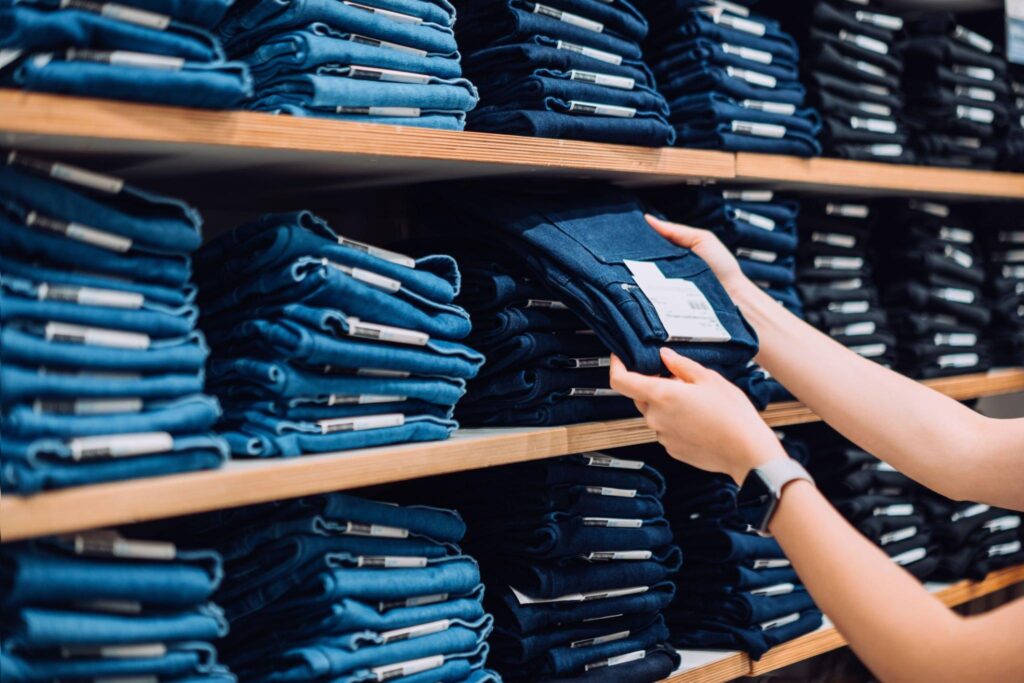

This is denim that has been treated so that it won’t shrink when it gets wet. Except for raw denim, most denim is Sanforized.
-
Colored Denim


There are two different kinds of coloured denim: blue and the rest. Indigo dying is the process of turning something blue or close to blue. Denim can be black, pink, grey, mustard, green, red, and other colours by being dyed with sulphur or other chemicals. Denim is tinted to make its colour darker.
-
Poly Denim


People who like the look of denim but prefer polyester blends that are easier to wash and dry, lighter, and a bit more dressy, like the blends. These tend to appeal to a slightly older crowd, but they are also becoming popular with pantsuits and other outfits that are meant to look “dressy but casual.”
-
Stretch Denim


This is denim that has been made stretchy with synthetic elastane fibres like lycra or spandex. How much stretch the fabric has will depend on how much elastane it has. Weft yarn is made from the elastane fibres.
-
Selvedge Denim
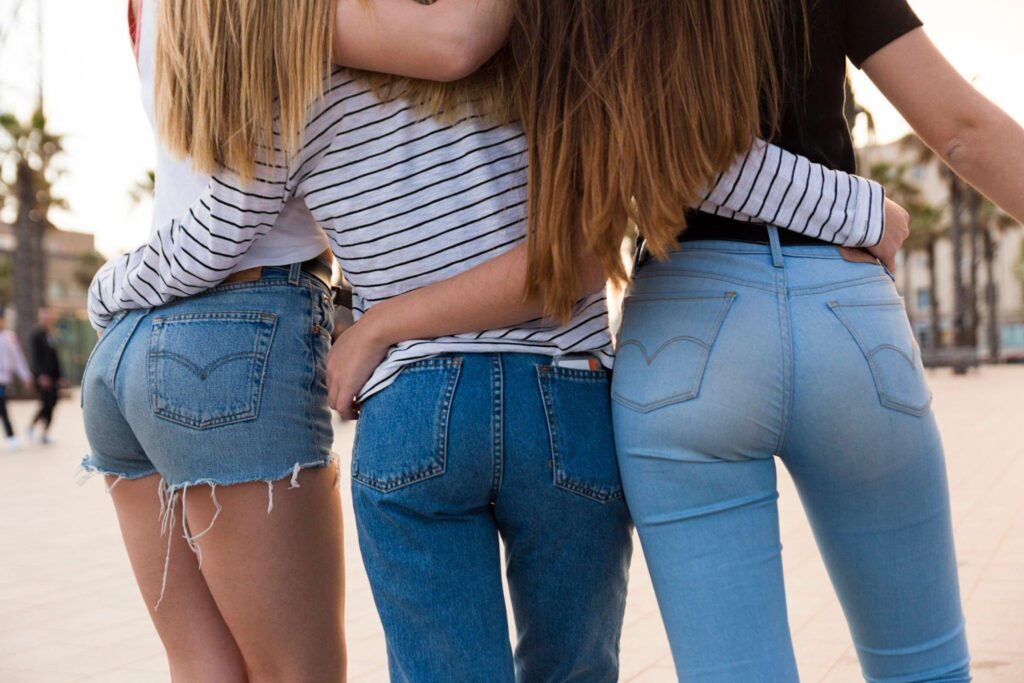

This refers to the denim fabric that has a band around the edge that is usually orange or red. It is also known as selvage denim or self-edge denim.
-
Lightweight Denim
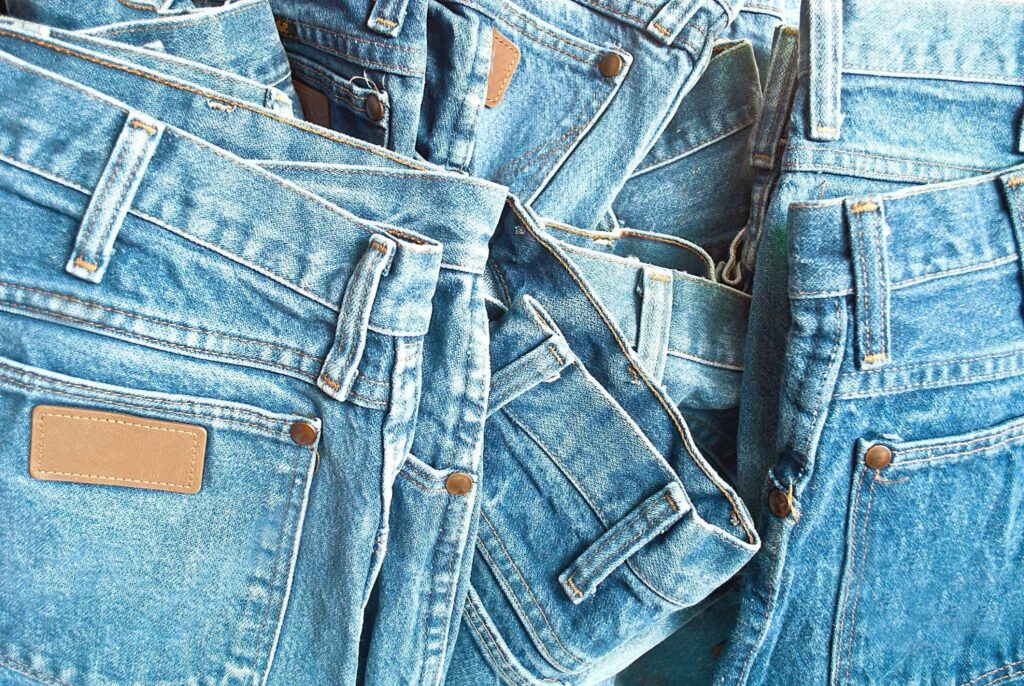

This is the type of denim that is most often used to make blouses and other summer clothes. Most of the time, this is denim with a plain weave.
-
Crushed Jeans
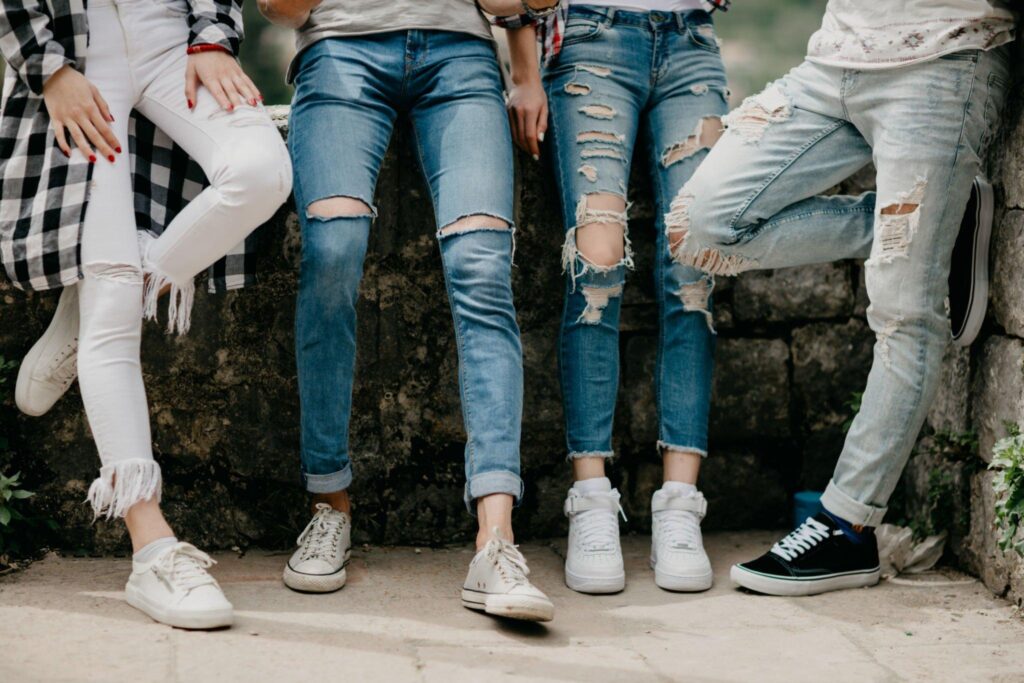

This is a Denim fabric that is woven and treated in a way that makes it always look crushed or wrinkled.
-
Waxed Reverse Denim


The back of this denim fabric is coated with wax to make it water-resistant. It’s mostly used to make bags and gear for the outdoors.
-
Polycore Denim
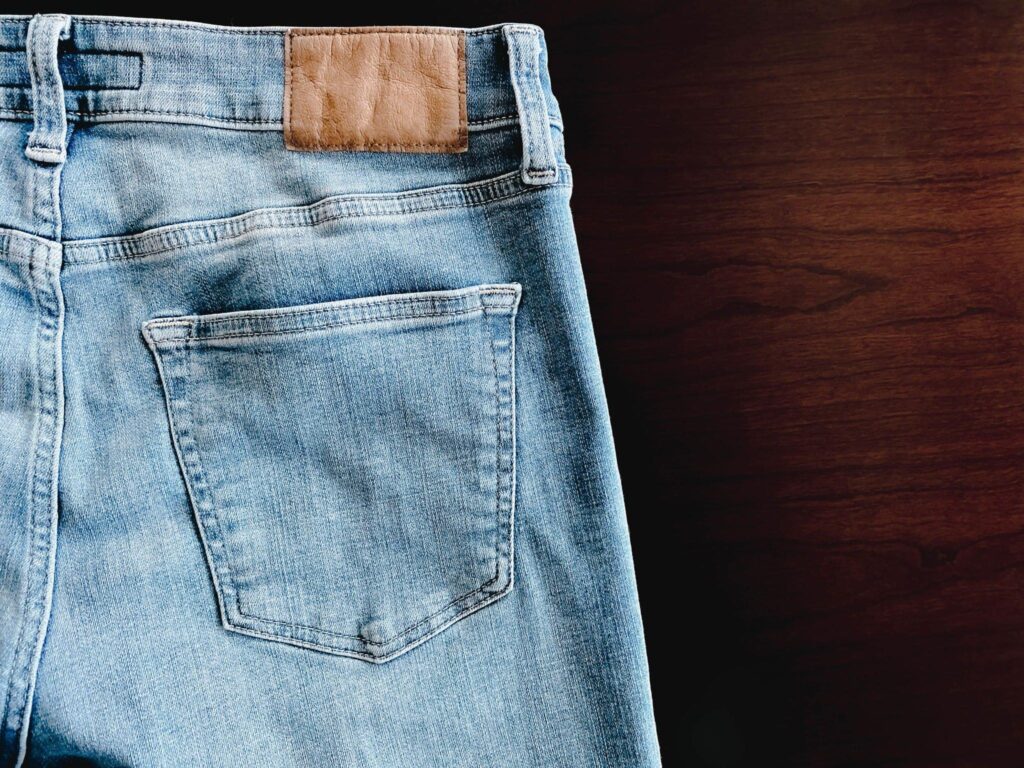

This fabric is a mix of denim vs cotton and polyester fibres. When you mix polyester and cotton, you get a fabric that can absorb water, is strong, and doesn’t wrinkle.
-
Jeans With A Wash


Marble denim is another name for acid-washed denim. This is a finish on denim fabric that is made with a pumice stone that has been soaked in chlorine.
The stones wear away the colour of the fabric, which looks good next to the indigo colour. After that, the fabric is rinsed, softened, and then dried. When your worn-in jeans are made, the denim goes through many other washes, like an enzyme wash or a stone wash.
-
Poly Denim
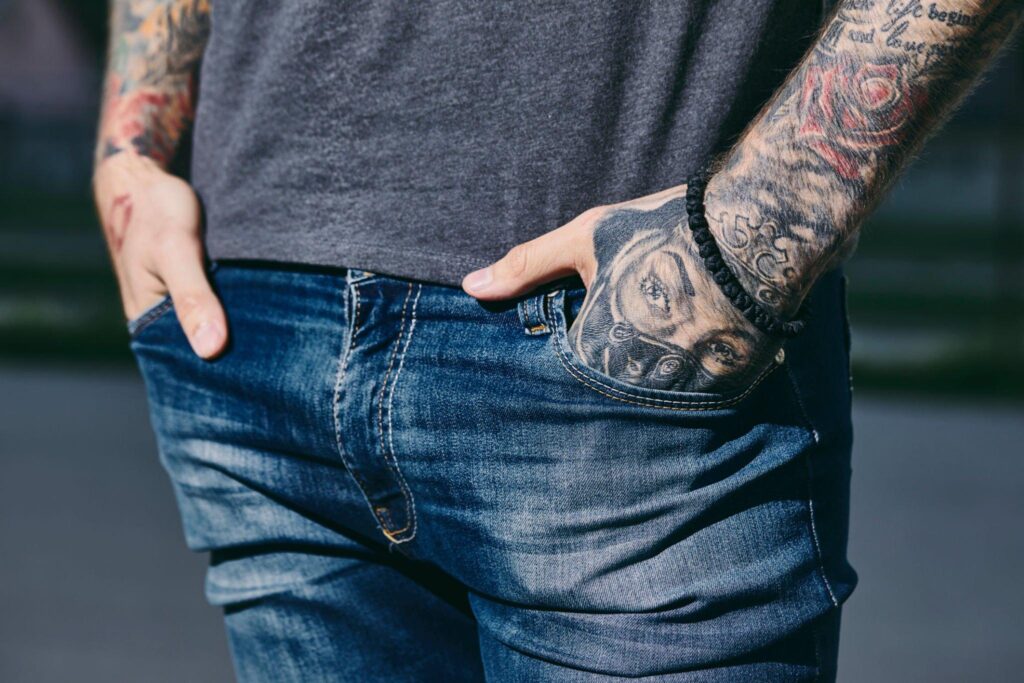

This is Denim fabric that has a small amount of Polyester fibres mixed in. This fabric is very soft to the touch, easy to clean, and has some stretch to it. It is often used to make jackets, shirts, and hats. The polyester blend makes denim last longer, feel smoother, and look better.
-
Ecru Denim


Blue jeans that haven’t been dyed blue. This fabric is denim’s natural colour because it hasn’t been dyed.
-
Bull Denim
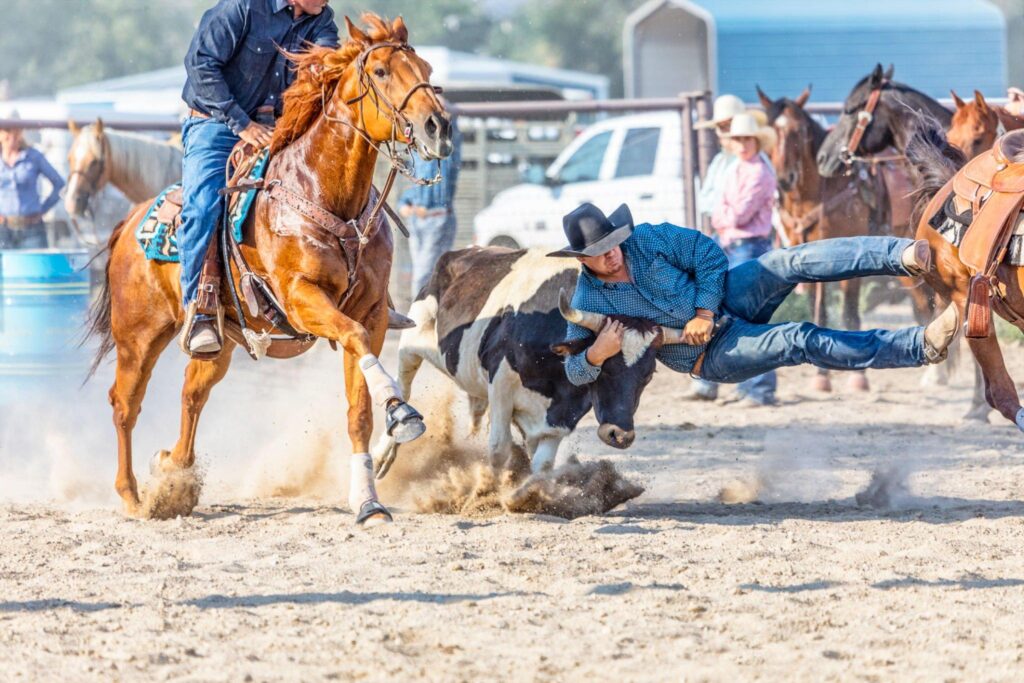

The 3*1 twill construction of this denim makes it very strong and durable. It’s not as strong as canvas, but it’s heavy and lasts a long time. Bull denim is mostly used for furniture and other home decor, not for clothing manufacturers.
-
Double Dyed Denim
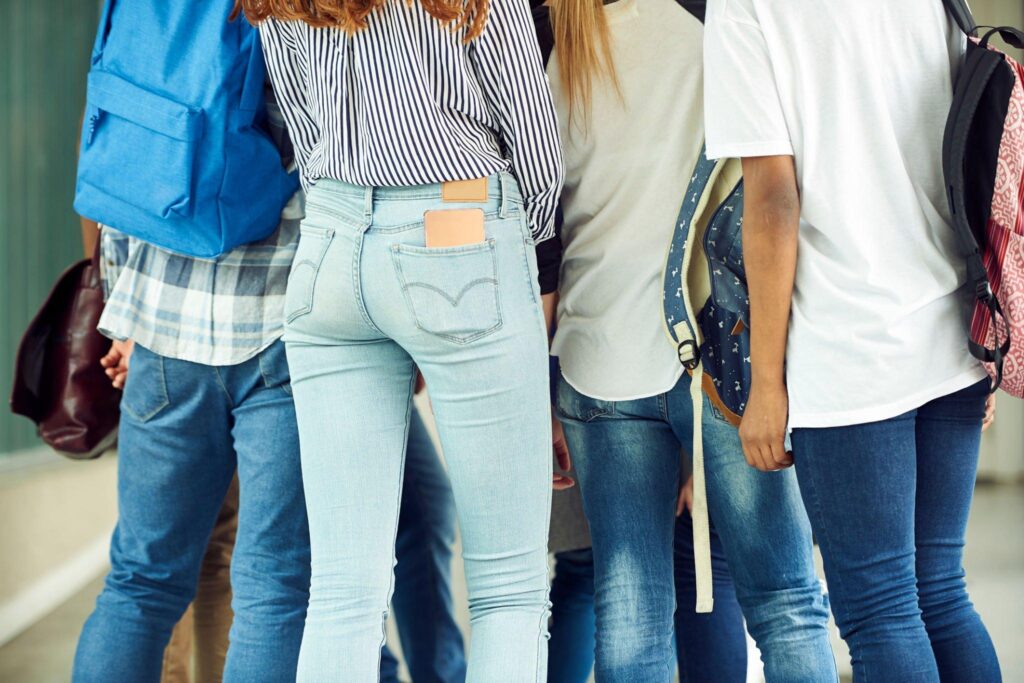

Indigo dye is used to dip-dye denim yarns. Double-dyed denim is denim that has been dipped in dye twice as many times as regular denim. This gives it a very dark colour.
-
Thermo Denim


Double denim is another name for this. A light fabric is stuck to the back of this denim fabric. This fabric gives the appearance that the garment is lined.
-
Slub Denim
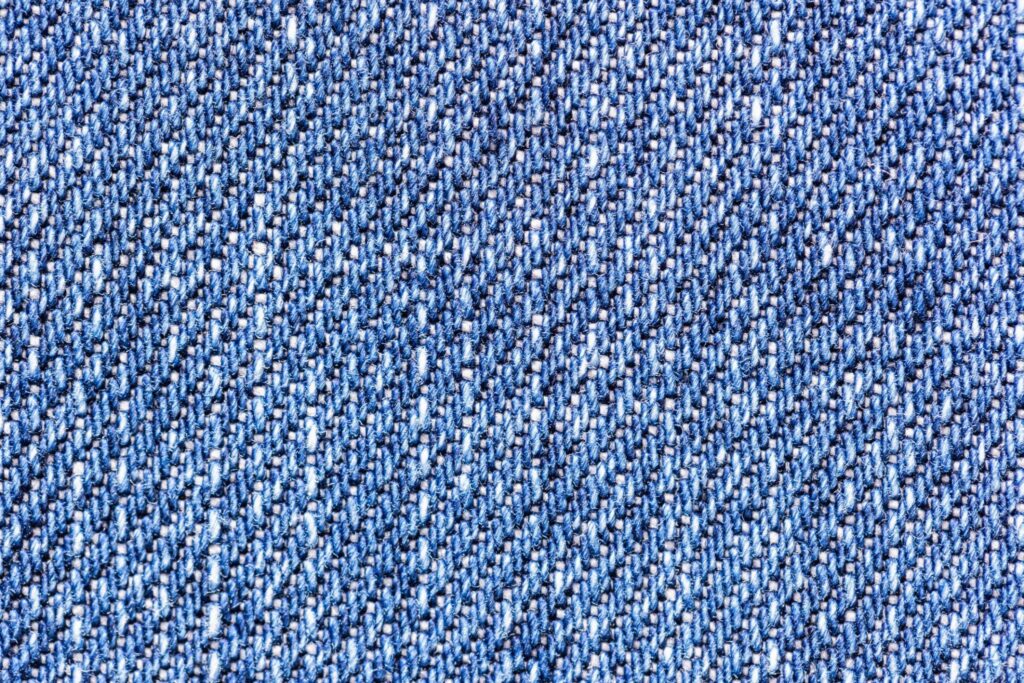

This denim is made of yarn with different thicknesses, which gives it a nice, different texture.

